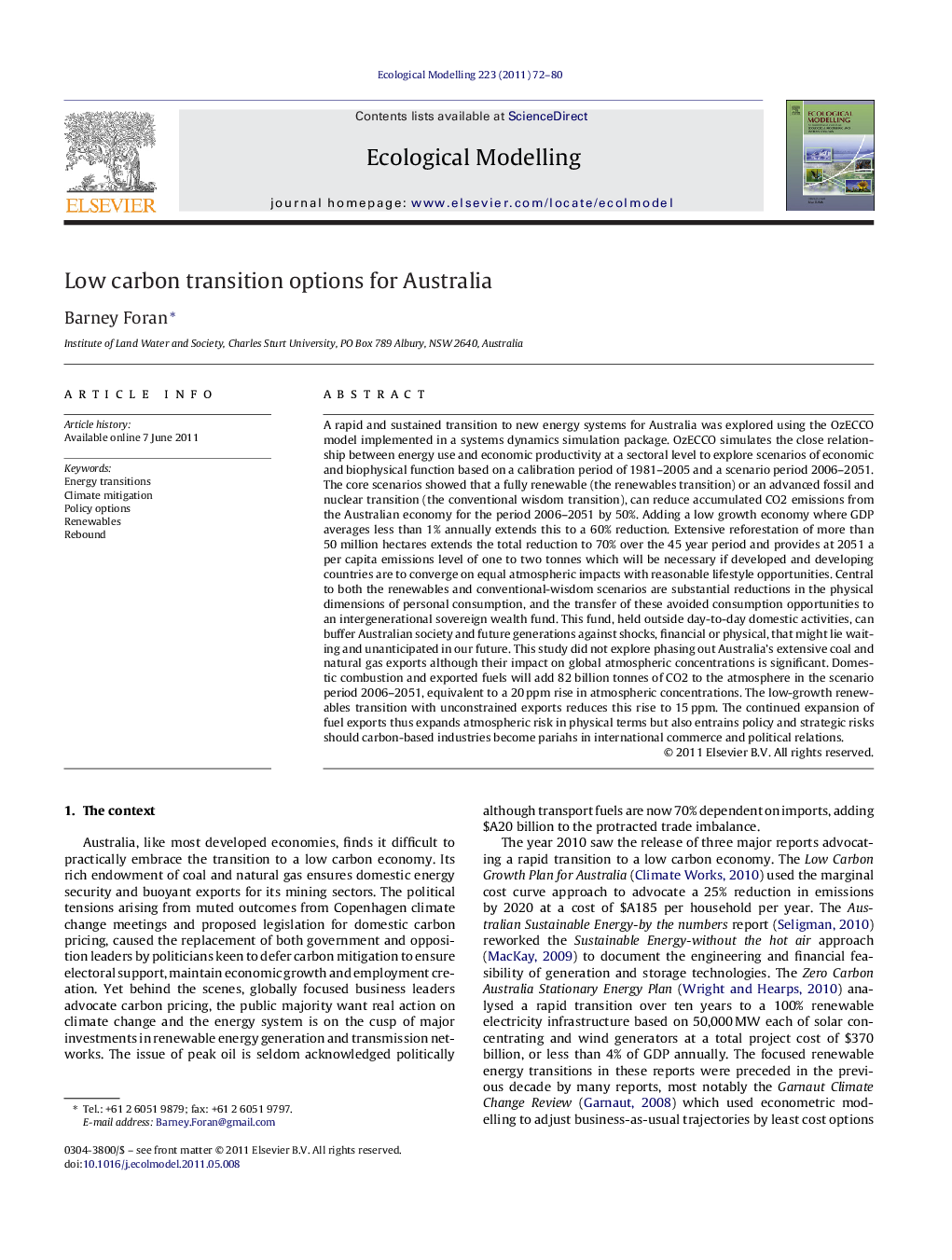| کد مقاله | کد نشریه | سال انتشار | مقاله انگلیسی | نسخه تمام متن |
|---|---|---|---|---|
| 4376703 | 1303389 | 2011 | 9 صفحه PDF | دانلود رایگان |

A rapid and sustained transition to new energy systems for Australia was explored using the OzECCO model implemented in a systems dynamics simulation package. OzECCO simulates the close relationship between energy use and economic productivity at a sectoral level to explore scenarios of economic and biophysical function based on a calibration period of 1981–2005 and a scenario period 2006–2051. The core scenarios showed that a fully renewable (the renewables transition) or an advanced fossil and nuclear transition (the conventional wisdom transition), can reduce accumulated CO2 emissions from the Australian economy for the period 2006–2051 by 50%. Adding a low growth economy where GDP averages less than 1% annually extends this to a 60% reduction. Extensive reforestation of more than 50 million hectares extends the total reduction to 70% over the 45 year period and provides at 2051 a per capita emissions level of one to two tonnes which will be necessary if developed and developing countries are to converge on equal atmospheric impacts with reasonable lifestyle opportunities. Central to both the renewables and conventional-wisdom scenarios are substantial reductions in the physical dimensions of personal consumption, and the transfer of these avoided consumption opportunities to an intergenerational sovereign wealth fund. This fund, held outside day-to-day domestic activities, can buffer Australian society and future generations against shocks, financial or physical, that might lie waiting and unanticipated in our future. This study did not explore phasing out Australia's extensive coal and natural gas exports although their impact on global atmospheric concentrations is significant. Domestic combustion and exported fuels will add 82 billion tonnes of CO2 to the atmosphere in the scenario period 2006–2051, equivalent to a 20 ppm rise in atmospheric concentrations. The low-growth renewables transition with unconstrained exports reduces this rise to 15 ppm. The continued expansion of fuel exports thus expands atmospheric risk in physical terms but also entrains policy and strategic risks should carbon-based industries become pariahs in international commerce and political relations.
► Two transition routes to a low carbon economy are explored for Australia.
► These are the ‘renewable energy’ and ‘best conventional fossil plus nuclear’ options.
► Both are capable of reducing greenhouse emissions by 50% in a growing economy.
► Only a low growth economy achieves a 90% reduction by 2050.
► Modern economic and political thought ignores physical realities.
Journal: Ecological Modelling - Volume 223, Issue 1, 24 December 2011, Pages 72–80